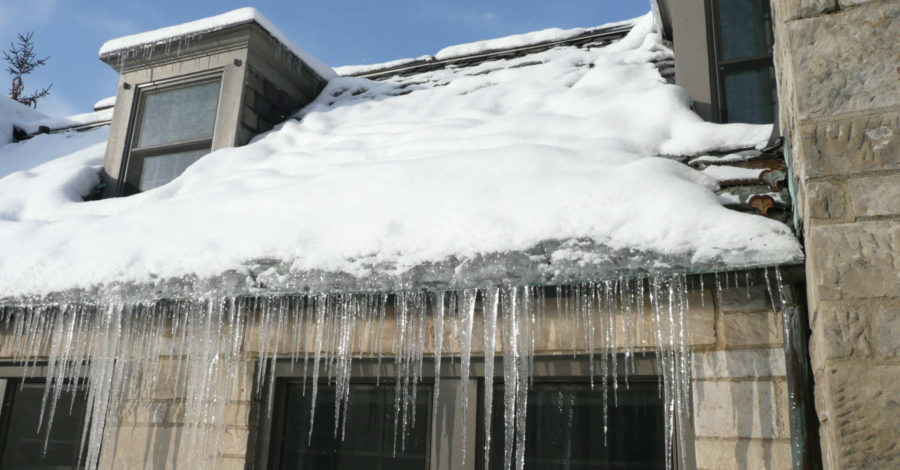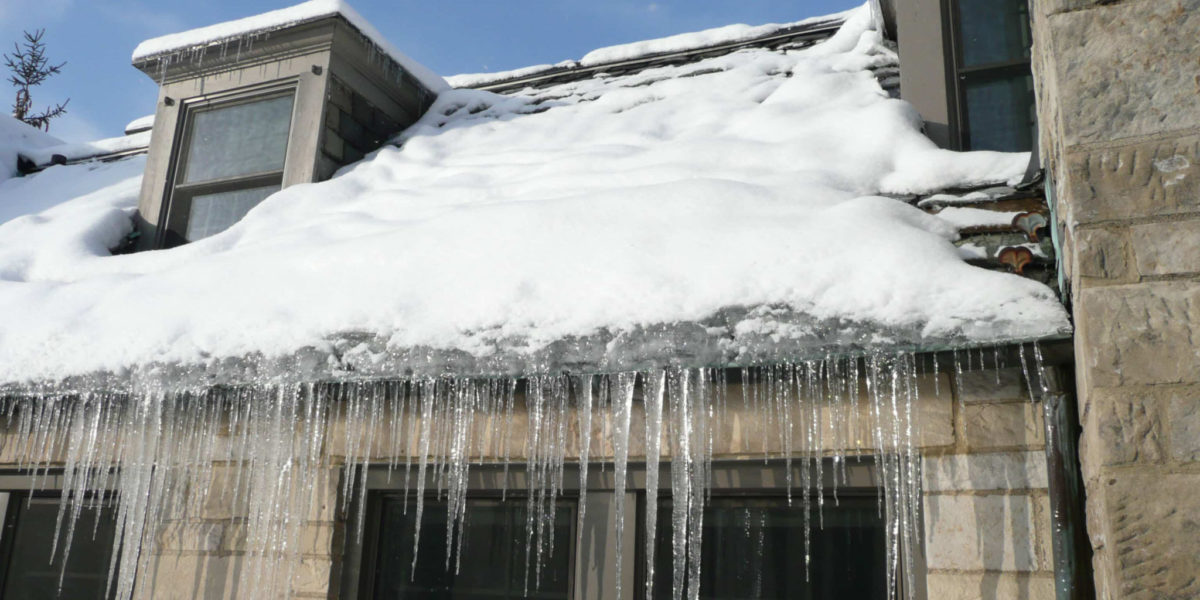July 19, 2019 / By sprayfk_admin
How the ice dams formulate
When you live in a climate that has sub-zero temperatures during the winter months, then your homes insulation is something that isn’t taken lightly. Truthfully though, a home that is properly insulated isn’t only an indicator of a warmer home, but has benefits that reach further into other areas of a safety and also economic.
As kids, you may have been in awe of homes that had large and long icicles that were hanging off of the eaves drops. Sadly, these spectacles of nature are more often than not a result of a dangerous problem looming inside the roof of the home. There are solutions to having these ice dams from forming. What is the solution to this problem? Well lets have a look at the complete picture to get an idea.

If an attic isn’t sufficiently insulated, or improperly, warm conditioned air seeps through gaps that are between the insulation of the homes ceiling and the attics floor. In effect, the heated air can melt the snow that has rested on the roof of the home. Naturally, this will create a runoff from the roof. When this runoff ultimately reaches the colder eavesdrop, it can freeze up again and hence lead to an ice dam development. This process repeats itself until a noticeable buildup occurs and and ice dam then backs up further up the roof, this can sometimes devastate shingles and peel them off the roof. At this point the roof is now susceptible as it’s shingle membrane has been compromised, so all of the melting of the snow and its water runoff have nowhere to go but into your home.
The ice dam consequences
There are a few problems that can come to pass as a consequence of the formulation of ice dams on your roof, of which many can be serious:
- ice buildup can cause damage to eavestrough
- water can penetrate your roof and damage walls and ceilings
- if you have traditional insulation, it can get wet and lose it’s R-value
- mildew and mold can develop dangerously on moist insulation
- shingles can dislodge
- icicles can injure someone if they fall
- ice buildup can lead to shingle damage
The telltale sign that your roof may be in jeopardy are the formation of icicles on your eaves. Check out our flat roof insulation service for homes in the GTA.
Temporary fixes for ice dams
If old man winter has already rolled in and you just begin to notice that you are at risk of your roof developing ice dams, there are several solutions you can opt for to help with the management of future problems arising. Though none of these are permanent solutions, they can help you get through the winter at hand whilst minimizing damage.
Avoid climbing up a ladder to try and chip at the ice with an ice pic or shovel, this is extremely dangerous as the conditions can be slippery, it can also potentially damage the shingles and the eaves on your roof.
A good temporary solution would be to use calcium chloride to help melt away the ice that is in the passageway, this way the water has a place to drain away into and not keep building on existing ice. An efficient way of distributing this is to take an old article of clothing and fill a sleeve with the calcium chloride, place it on the roof vertically. What this does is it creates a trough where any melting ice can safely pass through.
Furthermore, another temporary fix if there is a leak, is to bring in a high-powered cooling fan into the attic and freeze the area where this water I leaking into. What this does is it keeps the water in ice state limiting water damage until spring comes around and a more permanent solution is available.
Permanent solutions for ice dams
Truthfully the above mentioned temporary solutions are only short term and they will only ease the damage done for that season. Some people may have all the answers , but there’s only one way that you can minimize the formation of ice damspermanently, and that’s by creating the same temperature on your roof as the outdoor air.
The proper way to achieve this is to insulate your attic properly, and of course to get the best seal to avoid any leaks that would melt the snow and create this potential hazard. How is the best way to achieve this air seal? With spray foam insulation.
A major difference from spray foam insulation and traditional insulation, is that air leaks are difficult to avoid with traditional as it is difficult to get a solid seal in hard to reach nooks. Spray foam insulation on the other hand has an expanding nature that happens when it is applied and it fills all the nooks and crannies that would otherwise be impossible to seal. This creates the most airtight seal in the business.
The heat generated by your homes heating system will stay where it is meant to when you use spray foam insulation, and you will drastically minimize the risk of an ice dam forming as an attic sealed and insulated with spray foam has little to no air loss. This will ultimately leaving you to enjoy your homes comfort while not having to worry about any damage occurring on your roof which can lead to other hazards.


